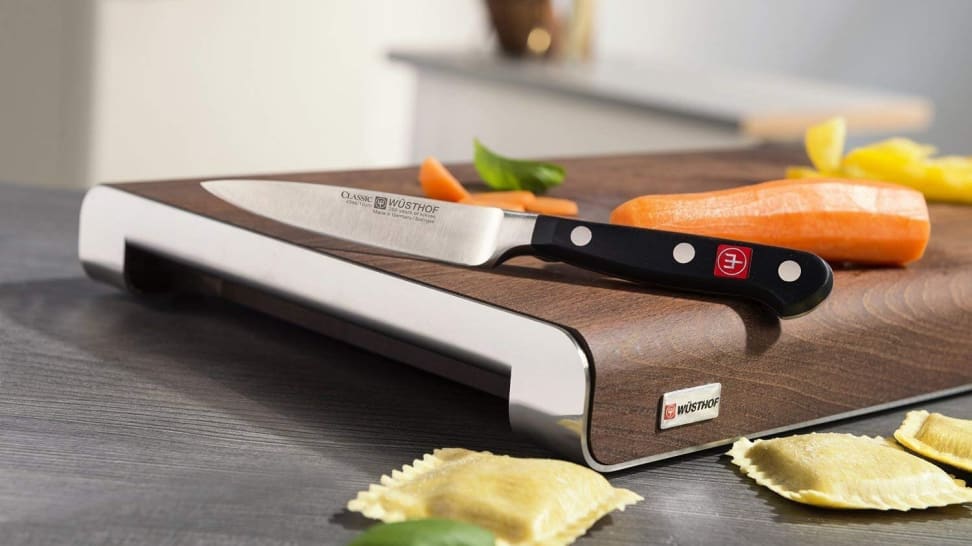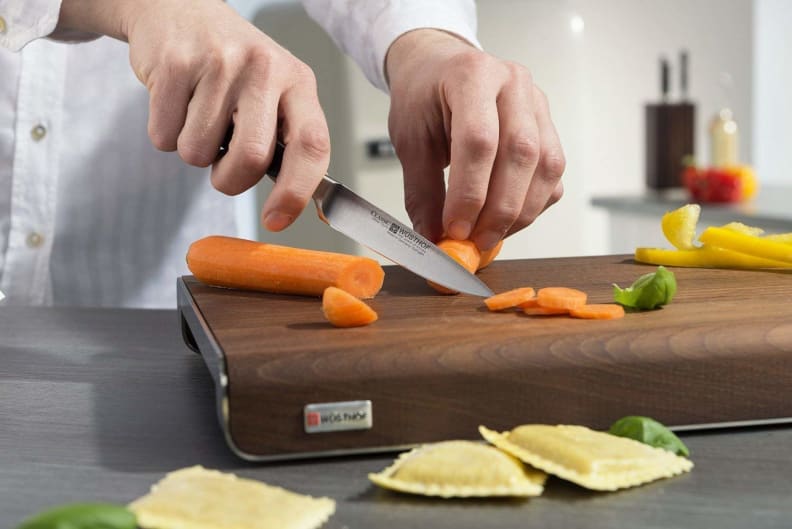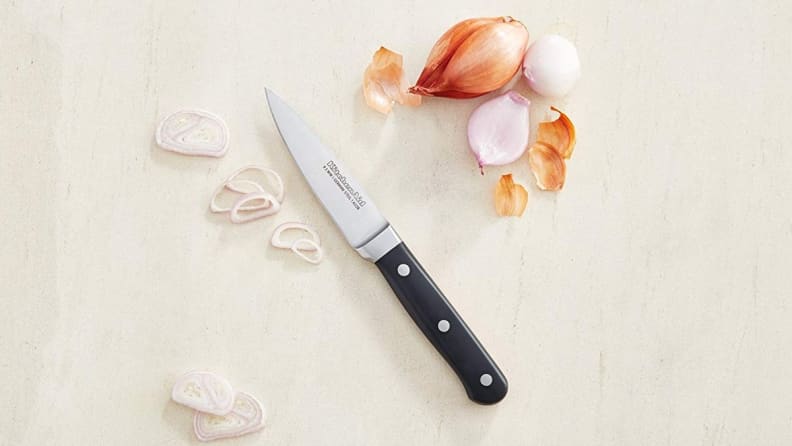What is a paring knife anyway, and how do you use one?
This little knife delivers precise cuts.
 Credit:
Wüsthof
Credit:
Wüsthof
Products are chosen independently by our editors. Purchases made through our links may earn us a commission.
Different knives have different roles in the kitchen. Powerful cuts come from your chef’s knife, but when you need a more delicate touch, it’s time to break out your paring knife.
These small tools allow for dexterity while dicing, meaning they’re perfect for detail-oriented tasks. Here's how you can tell paring knives apart from other kitchen knives, as well as a list of the tasks they're best suited for.
What is a paring knife, exactly?
Paring knives feature short, yet powerful blades, typically measuring between 2.5 to 4 inches. Their small design makes them ideal for cutting in hard-to-reach places or tackling tasks where precision is important. For many cooks, a paring knife is the go-to for tool when a chef’s knife is too large.
Since paring knives are comparatively small, you don’t always need a cutting board to use them. The handle should be sized for your grip, giving you exact control over blade movement while slicing, coring and peeling. Move slowly and carefully when first starting out with a paring knife—the blade is sharp, but if you control it, it’s easily manageable.
What do you use a paring knife for?

You can do all sorts of meal prep with a paring knife.
Once you become comfortable with your paring knife, you’ll find more and more tasks to use it for. It’s a dream for meal prep, especially when you're prepping fruits, vegetables and meats. The following are some of the most popular uses for paring knives.
1. Deveining shrimp
One time my stepfather called me in a panic because he was deveining shrimp for the first time. I talked him through the process—find the dark vein, slice with a paring knife, pull out the vein, move on to the next. He called me back screaming an hour later because I didn’t tell him the vein was actually full of shrimp... excrement. He was hurt and offended that I was allowing him to touch shrimp poop.
No one enjoys deveining shrimp—my stepfather in particular—but with your paring knife, it becomes a manageable task. Grip each shrimp and find the dark line running down its back—this is the intestine, and it needs to go. Use your paring knife to make a small incision, then pry the line up with the tip of your blade.
2. Peeling ingredients
Paring knives are great alternatives to conventional peelers. However, there's a bit of a learning curve when you're using a knife to peel for the first time.
As you would with a peeler, hold the food firmly in one hand, then grip the handle of your paring knife. Slowly move the blade toward your body, cutting under the skin of the ingredient. Move lightly, or else you’ll take off more than just the peel.
3. Coring tomatoes
To core a tomato with your paring knife, insert the tip about 1 centimeter to the left of the core. Dig down about one inch, then saw your way around the core. The circle should pop out when you’re done.
4. Decasing sausage
Most sausage links come encased in delicate sheaths, which keep the ingredients contained, but can pose problems when cooking, especially if you’re breaking sausage into smaller pieces. Using your paring knife, you can lightly draw a line down one side of the sausage—not enough to slice deeply, but enough to break the skin. Once you’ve made it all the way down, peel the casing back and discard it.
5. Hulling strawberries
If you’re baking with strawberries or, let’s be honest, eating them straight from the container, you’ll get more from the fruit if you properly hull it. Similar to when you're coring a tomato, insert your paring knife to the side of the strawberry stem, then carve a circle around it. Pop it right out, and enjoy your treat.
6. Scoring meat
Certain cuts of meat have fatty pockets that you'll want to leave in while cooking. If you’re roasting, for example, this fat provides delicious flavor that seeps through the meat over the course of several hours. Instead, you’ll just want to score the meat.
To do this efficiently, use your paring knife to draw lines through fatty sections. The technique will vary depending on the type of meat you’re preparing—pork chops, for example, require two equal cuts on the fatty edge.
What to look for when buying a paring knife

Prioritize blade size and comfort when shopping for a paring knife.
Since paring knives are used for such delicate tasks, you’ll thank yourself for investing in a high-quality product. Some of the features you’ll want to consider include:
-
Blade size: Paring knives come in many sizes, but we've found the sweet spot to be between 3.25 and 3.5 inches.
- Blade-to-handle ratio: This applies to both size and weight. You want the blade and handle to be roughly equal in size, and you want the weight to be balanced. It shouldn't be too heavy on one end, or it will be clunky to use.
- Comfortable grip: You’ll be grasping this part tightly with each use, so make sure it doesn't hurt your hand.
If you're shopping for a full knife set, make sure it includes a paring knife—or two! Seriously, once you invest in a paring knife, you'll wonder how you got by for so many years without one. Happy slicing, home chefs.


